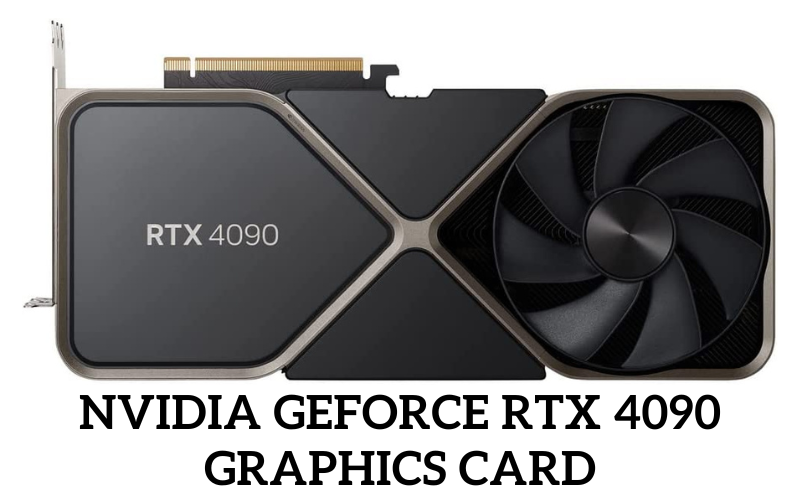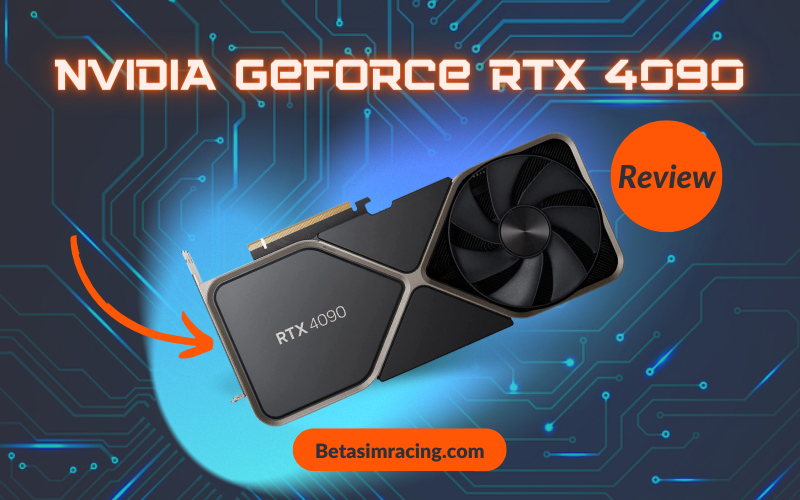Since its launch, the NVIDIA GeForce RTX 4090 has occupied the throne of consumer graphics cards, representing the pinnacle of gaming and creative performance. As we move through, it remains a monumental piece of engineering. This comprehensive analysis will explore every facet of the RTX 4090, using current, up-to-date information to provide a clear picture of its capabilities, from its underlying architecture to its real-world performance in the latest, most demanding applications.
This guide is a purely informational resource, designed to detail the objective performance and features of the RTX 4090. We will delve into its specifications, 4K gaming benchmarks, the impact of DLSS 3.5 technology, and its prowess in content creation workloads. Furthermore, we will address practical considerations like power consumption, cooling, and how it compares to other GPUs on the market to help you understand its place in the current landscape.
RTX 4090 vs. Key Alternatives: A 2025 Snapshot
To provide immediate context, this table compares the GeForce RTX 4090 with its direct predecessor, the RTX 3090, and its closest current-generation sibling, the RTX 4080 SUPER, which replaced the original RTX 4080.
| Feature | NVIDIA GeForce RTX 4090 | NVIDIA GeForce RTX 4080 SUPER | NVIDIA GeForce RTX 3090 |
| GPU Architecture | Ada Lovelace | Ada Lovelace | Ampere |
| Manufacturing Process | TSMC 4N Custom | TSMC 4N Custom | Samsung 8N |
| CUDA Cores | 16,384 | 10,240 | 10,496 |
| Boost Clock (FE) | 2.52 GHz | 2.55 GHz | 1.70 GHz |
| VRAM | 24 GB GDDR6X | 16 GB GDDR6X | 24 GB GDDR6X |
| Memory Interface | 384-bit | 256-bit | 384-bit |
| Memory Bandwidth | 1,008 GB/s | 736 GB/s | 936.2 GB/s |
| Tensor Cores | 4th Generation | 4th Generation | 2nd Generation |
| RT Cores | 3rd Generation | 3rd Generation | 2nd Generation |
| DLSS Support | DLSS 3.5 (Frame Gen & Ray Recon.) | DLSS 3.5 (Frame Gen & Ray Recon.) | DLSS 2.0 |
| Total Board Power (TBP) | 450W | 320W | 350W |
| Launch MSRP | $1,599 | $999 | $1,499 |
The NVIDIA GeForce RTX 4090 in 2025: Still the Apex Predator?

Years after its debut, the RTX 4090 maintains its status as the undisputed king of consumer GPUs. It delivers a level of performance that no other single card on the market can consistently match, particularly in the most demanding scenarios like 4K gaming with full path tracing enabled.
While newer cards have filled out the market, including NVIDIA’s own SUPER series refresh, none have challenged the 4090’s raw power. Its combination of a vast number of CUDA cores, a large 24 GB VRAM buffer, and exclusive DLSS 3 features creates a performance ceiling that remains exceptionally high. For users who demand the absolute best without compromise, the RTX 4090 continues to be the target.
Architectural Deep Dive: The Ada Lovelace Engine
The performance of the RTX 4090 is rooted in its Ada Lovelace architecture, a significant leap forward from the previous Ampere generation. Built on a custom TSMC 4N process, Ada Lovelace allows for a massive increase in transistor density, enabling NVIDIA to pack 76.3 billion transistors into its flagship AD102 GPU.
Core Specifications Breakdown
The sheer numbers behind the RTX 4090 are formidable. It features 16,384 CUDA Cores, the parallel processors responsible for the bulk of the rendering workload. This is a substantial increase over the 10,752 found in the already powerful RTX 3090 Ti.
This is paired with 24 GB of high-speed GDDR6X memory on a wide 384-bit bus, resulting in over 1,008 GB/s of memory bandwidth. This massive bandwidth is crucial for feeding the hungry GPU core with data, especially when dealing with high-resolution textures and complex scenes in 4K and 8K. For those building a new PC, understanding how these components work together is key. When selecting a chassis, it’s important to consider different types of PC cases to ensure proper fit and airflow for such a powerful card.
4th-Gen Tensor Cores & 3rd-Gen RT Cores: The Brains of the Operation
Beyond raw core counts, the specialized cores within the Ada architecture are what set the 40-series apart.
- 4th-Generation Tensor Cores: These cores are dedicated to AI and machine learning tasks. Their primary function in gaming is powering NVIDIA’s Deep Learning Super Sampling (DLSS) technology, which dramatically boosts performance.
- 3rd-Generation RT Cores: These cores are engineered specifically to accelerate ray tracing calculations, a computationally intensive rendering technique that simulates the physical behavior of light to create incredibly realistic shadows, reflections, and illumination. The 3rd-Gen cores on the 4090 are significantly more efficient than their predecessors.
Real-World Gaming Performance Benchmarks (2025 Analysis)
Synthetic benchmarks are one thing, but real-world gaming performance is the ultimate metric for a card like the RTX 4090, with a library of incredibly demanding titles, its capabilities are on full display.
4K Ultra HD Gaming Performance (Rasterization)
In traditional rasterized gaming (without ray tracing), the RTX 4090 is a 4K monster. In even the most graphically intense titles like Cyberpunk 2077, Alan Wake 2, and Starfield, it consistently delivers frame rates well above 100 FPS at maximum settings. This level of performance makes it ideal for pairing with high-refresh-rate 4K monitors, providing a fluid and responsive experience that was previously unattainable in a single GPU.
Ray Tracing and Path Tracing Dominance
This is where the RTX 4090 truly distinguishes itself. Ray tracing, and its even more intensive form, path tracing, places an enormous load on a GPU. The RTX 4090 is often the only card capable of running path-traced games at native 4K with playable frame rates.
Expert Insight: In titles with “Overdrive” or “Psycho” ray tracing modes, the RTX 4090 can deliver a visually stunning experience that is simply not possible on lower-tier hardware. When combined with DLSS, it achieves a remarkable balance of visual fidelity and performance that competitors struggle to match. The complex calculations involved highlight why a good understanding of what a motherboard’s chipset performs is vital for a balanced system.
Evaluating Performance at 1440p and 1080p
While the RTX 4090 can certainly run games at 1440p and 1080p, it is often CPU-bottlenecked at these lower resolutions. This means the GPU is so fast that it’s waiting for the CPU to feed it information. Users gaming at these resolutions will not see the full potential of their investment. The RTX 4090 is a card built explicitly for 4K and beyond.
The DLSS Revolution: An AI-Powered Performance Leap
Deep Learning Super Sampling (DLSS) is arguably the most important feature of the RTX 40-series. It’s not just one feature, but a suite of AI-driven technologies that work together to increase performance and image quality.
Super Resolution: Upscaling Perfected
At its core, DLSS Super Resolution renders the game at a lower internal resolution (e.g., 1080p) and then uses AI and the GPU’s Tensor Cores to intelligently upscale the image to your target resolution (e.g., 4K). The result is an image that is often nearly indistinguishable from native 4K, but with a massive performance uplift.
Frame Generation: Creating Performance Out of Thin Air
Exclusive to the RTX 40-series, DLSS 3 Frame Generation is a transformative technology. It analyzes two sequential frames and uses the Optical Flow Accelerator on the GPU to generate an entirely new frame in between them. This can nearly double frame rates in supported games, leading to a much smoother perceived experience. This technology is a key reason why the 4090 performs so well in CPU-intensive games, as it offloads part of the rendering pipeline to the GPU’s AI hardware.
Ray Reconstruction (DLSS 3.5): Enhancing Ray-Traced Fidelity
Introduced with DLSS 3.5, Ray Reconstruction is an AI-powered denoiser that replaces traditional, hand-tuned denoisers. It produces higher-quality, more accurate, and more stable ray-traced lighting, shadows, and reflections, further improving the visual output of games that utilize heavy RT effects.
Creator and Productivity Performance
The RTX 4090 is not just for gaming. Its massive computational power makes it an exceptional tool for content creators and professionals.
Dual AV1 Encoders for Streaming and Video Production
The RTX 4090 includes dual 8th-generation NVIDIA Encoders (NVENC) with support for the AV1 codec. AV1 offers significantly better compression efficiency than H.264, meaning streamers can broadcast higher-quality video at the same bitrate. For video editors, this translates to faster export times in supported applications like DaVinci Resolve and Adobe Premiere Pro.
3D Rendering and Computational Workloads
In 3D rendering applications like Blender, V-Ray, and OctaneRender, the RTX 4090’s large VRAM and high core count dramatically reduce render times. Projects that might take hours on lesser hardware can be completed in a fraction of the time, making it an invaluable asset for 3D artists, architects, and animators. For those diving into complex projects, ensuring your system is stable is crucial, and knowing how to check CPU temp is a fundamental skill.

Physical Design, Power, and Thermal Management
The performance of the RTX 4090 comes with significant physical and power considerations.
Founders Edition vs. Partner Cards (AIBs)
NVIDIA’s own Founders Edition (FE) model is a masterclass in industrial design. It features a robust vapor chamber cooling system and a flow-through fan design that keeps the 450W card at reasonable temperatures. Add-in-Board (AIB) partners like ASUS, MSI, and Gigabyte offer custom models with often larger, more elaborate cooling solutions and factory overclocks. While these can offer slightly better thermals, they also tend to be even larger than the already massive FE card.
Power Consumption and PSU Requirements
The RTX 4090 has a Total Board Power (TBP) of 450W. It utilizes the 12VHPWR power connector, which is capable of delivering the required power over a single cable.
- PSU Recommendation: A high-quality 1000W power supply unit (PSU) is strongly recommended for a typical build featuring a high-end CPU. While an 850W unit may suffice in some configurations, the extra headroom of a 1000W PSU ensures stability under peak load. Consulting a reputable PSU tier list is a wise step before purchasing.
Cooling Solutions and PC Case Compatibility
This is a very large graphics card. The Founders Edition occupies three slots and measures 304mm in length. Many custom AIB models are even larger.
- Case Requirement: You will need a modern mid-tower or full-tower ATX case with ample clearance for both the card’s length and width. Before purchasing, it is critical to check the GPU clearance specifications of your chosen PC case. A case with excellent airflow, such as one from a list of the best airflow PC cases, is also essential to manage the heat produced.
Is the GeForce RTX 4090 the Right GPU for You in 2025?
The decision to acquire an RTX 4090 depends entirely on your specific needs and budget. It is an enthusiast-grade product through and through.
The Uncompromising Enthusiast
If your goal is to experience the absolute pinnacle of PC gaming at 4K or even 8K, with every graphical setting maxed out, and you want the highest possible frame rates, the RTX 4090 is the only choice. It is built for users who want the best, and its performance reflects that.
The High-End Content Creator
For professionals working with 8K video, complex 3D scenes, or large datasets, the time saved by the RTX 4090’s rendering and processing speed can directly translate into increased productivity. For these users, the high initial cost can be a justifiable business expense.
The Value-Conscious Gamer
For most gamers, especially those playing at 1440p or with a focus on high-frame-rate competitive titles, the RTX 4090 is significant overkill. A card like the RTX 4070 SUPER or RTX 4080 SUPER will deliver an excellent experience for a fraction of the cost, providing a much better performance-per-dollar ratio. Making an informed choice often comes down to comparing specifications, similar to a Logitech G920 vs G29 comparison for racing sim enthusiasts.
Frequently Asked Questions (FAQ)
What is the main difference between the RTX 4090 and the RTX 4080 SUPER?
The primary difference is raw performance. The RTX 4090 has significantly more CUDA cores (16,384 vs. 10,240), more VRAM (24 GB vs. 16 GB), and a wider memory bus (384-bit vs. 256-bit). This results in the RTX 4090 being roughly 25-35% faster on average at 4K, with an even larger gap in memory-intensive creative applications.
What is the recommended power supply wattage for an RTX 4090?
A high-quality 1000W PSU is the standard recommendation to ensure system stability, especially when paired with a power-hungry CPU. An 850W unit is the minimum, but provides less headroom for power spikes. It’s crucial to know how to connect the power supply to the motherboard correctly.
Can the RTX 4090 run games at 8K resolution?
Yes, the RTX 4090 is the first consumer GPU capable of providing a playable 8K (7680×4320) gaming experience in many titles, especially when utilizing DLSS in its “Ultra Performance” mode. However, frame rates will be much lower than at 4K.
Does the RTX 4090 still have issues with its power connector?
The initial launch of the 12VHPWR connector saw some reported issues, largely attributed to user error in not fully seating the connector. Since then, connector designs have been refined (the 12V-2×6 standard), and user awareness has grown. When fully and correctly plugged in, the connector is safe and reliable.
What CPU is best to pair with an NVIDIA RTX 4090?
To avoid bottlenecking the RTX 4090 at 4K, a high-end CPU is recommended. As of, top choices include the AMD Ryzen 7 7800X3D for its exceptional gaming performance, the Ryzen 9 7950X3D for a hybrid gaming/productivity focus, or Intel’s Core i9-14900K (or its successor).
What size PC case is needed for an RTX 4090?
You need a mid-tower or full-tower ATX case. The crucial specifications to check are the maximum GPU length and width clearance. Given the card’s weight, a GPU support bracket or a case with a built-in support system is also advisable to prevent GPU sag.
How does the RTX 4090 compare to the older RTX 3090?
The RTX 4090 represents a massive generational leap over the RTX 3090. In 4K gaming, it is typically 60-80% faster in traditional rasterization and can be over twice as fast in ray-tracing workloads, especially when factoring in DLSS 3 Frame Generation, a feature the RTX 3090 lacks.

Holding a Ph.D. in Computer Science, Dr. Alistair Finch is our chief PC Component Benchmark Analyst. He provides meticulous, data-driven analysis of CPUs and GPUs, moving beyond marketing claims to reveal their true performance. His guides help readers understand the intricate relationship between hardware architecture and real-world gaming frame rates.
